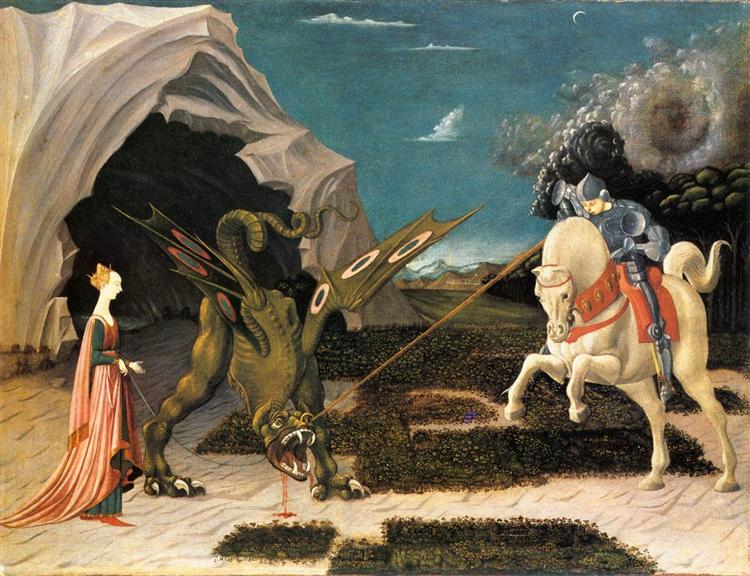
Early Renaissance
Art movement
The term Renaissance means rebirth. It was invented by a group of intellectuals of the 19th century, to mark a period of broad cultural achievement spanning three centuries, born in Italy of the 15th century, in particular in the city of Florence. The first period of establishment of the new Renaissance culture extends throughout the 15th century, and coexists with the late Gothic style, making it evolve in many aspects. This period is called Early Renaissance - as preceding later High Renaissance period.
In the 15th century, culture and art in Italy were very heterogeneous, discrepant in different geographical areas. Until the first half of the 15th century, the late Gothic culture remained strong and alive in the northern and southern regions. Meanwhile, in Florence, from the 2nd decade of the century, the transformation of the Renaissance took place, spreading to the whole Tuscany and then to the regions of central-southern Italy. In Northern Italy, the Renaissance influence came a little later; a culture there remained tied to International Gothic until the late 15th century.
The great revolution of this historical moment is connected to the modern vision of man and his role in history. The idea of rebirth lies at the heart of all Renaissance cultural areas and protagonists. Artists, scholars, scientists, philosophers, architects, and rulers believed that the way to greatness and enlightenment was through the study of the Golden Ages of the ancient Greeks and Romans. They were inspired by Humanism, the philosophical doctrine that placed a Man at the center of creation, as the highest point of the visible universe. Endowed with reason and affection, a Man is capable of manipulating reality according to his need; he can create beauty and understand its meanings. The Renaissance intellectuals looked up to the literary and philosophical traditions, as well as to the artistic and engineering achievements of Greco-Roman antiquity. There they tried to rediscover the birth of great human thought and the arts.
Giorgio Vasari, who lived in the 16th century, was the first art critic and art historian. Already at that time, he managed to catch the characteristics of this period, different from the Middle Ages. According to his idea, from the beginning of the 13th century in Italy, art had begun to conquer lost realism, returning to being "imitator of nature" as in the classical antiquity. Over the following centuries, art was, therefore "reborn," developing from the "boyhood" of the 14th century through the "youth" of the 15th century, to reach its peak in the "maturity" of the 16th century.
The germ of this new artistic period is identified in Giotto, who in the 14th century, with his joyful spiritual vision, represented the profiles of the figures, the expressions of the faces, the attitudes of the bodies, the drapery, the glimpse of the volumes, as we can see in Cycle of frescoes of the Life of St. Francis, in the Upper Basilica of Assisi (1292-96).
With the 15th century, the period of the Early Renaissance, Giotto's inventions developed, and joined the lifeblood of Humanism, thanks to the architect Filippo Brunelleschi, the sculptor Donatello and the painter Masaccio. The Dome of the Florence Cathedral (1420-1471) designed and built by Brunelleschi, Donatello's David (1440 c.) in bronze or the frescoes in the Brancacci Chapel (1424-1428) by Masaccio, with the Stories of Saint Peter, are recognized as works of art that marked a turning point in Western culture. These masterpieces, for the first time since Classical art, reflected a rational conception of man and space - as opposed to the religious conception of Gothic art.
By Maddalena Mongera
See also Early Renaissance (style)



